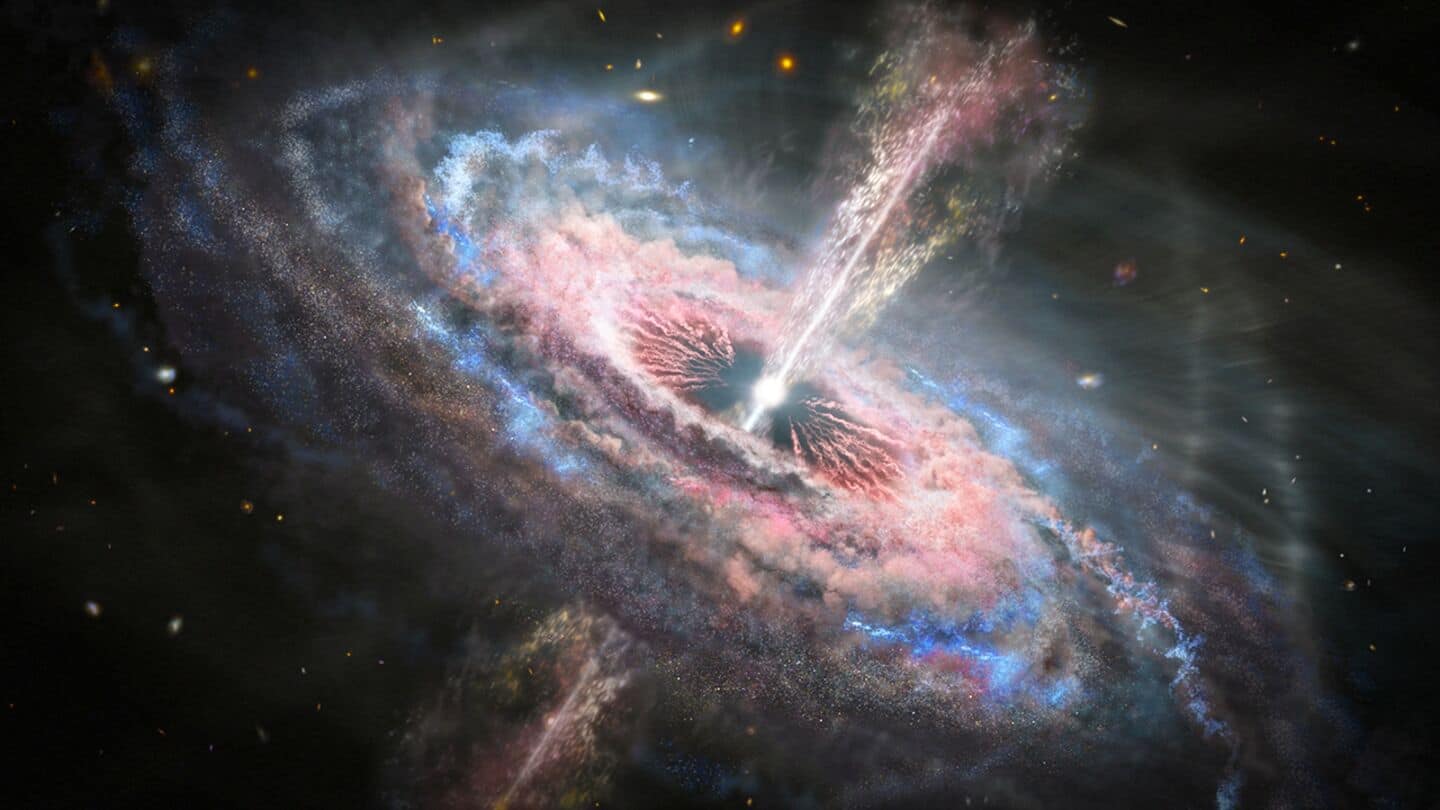
Watch: Over 60 new luminous quasars found by astronomers
What's the story
A team of astronomers from Seoul National University and other institutions has discovered 62 new luminous quasars. The finding was detailed in a research paper published on the arXiv preprint server. The All-sky BRIght, Complete Quasar Survey (AllBRICQS) project aims to find previously unknown optically bright quasars, using data from the Wide-field Infrared Survey Explorer (WISE) catalog and Gaia Data Release 3 (DR3).
Innovative technique
AllBRICQS project and quasar identification
The AllBRICQS project employs an innovative technique to find quasar candidates, leveraging data from the WISE catalog and precise parallax and proper motion measurements from Gaia DR3. So far, around 156 spectroscopically confirmed quasars have been identified as part of this groundbreaking survey. The latest discoveries were made by a team led by Yunyi Choi of Seoul National University.
Quasar diversity
Characteristics of newly discovered quasars
The newly discovered quasars span a wide range, including typical broad emission line quasars and the most luminous iron, low-ionization, broad absorption line quasars ever seen. The team first identified 75 quasar candidates in the northern hemisphere before confirming their status through spectroscopic observations with three ground-based telescopes in South Korea and China. The redshifts of these newly found quasars range from 0.09 to 2.48, with bolometric luminosities between 1-1,000 quattuordecillion erg/s.
Research impact
Rare FeLoBAL quasar discovery
The quasars will be a valuable resource for future studies of quasar physics, black hole growth, feedback processes, and host galaxy properties. The team also discovered a rare iron low-ionization broad absorption line quasar (FeLoBAL), designated J1356+3840. This new FeLoBAL is the most luminous quasar of its kind ever observed.